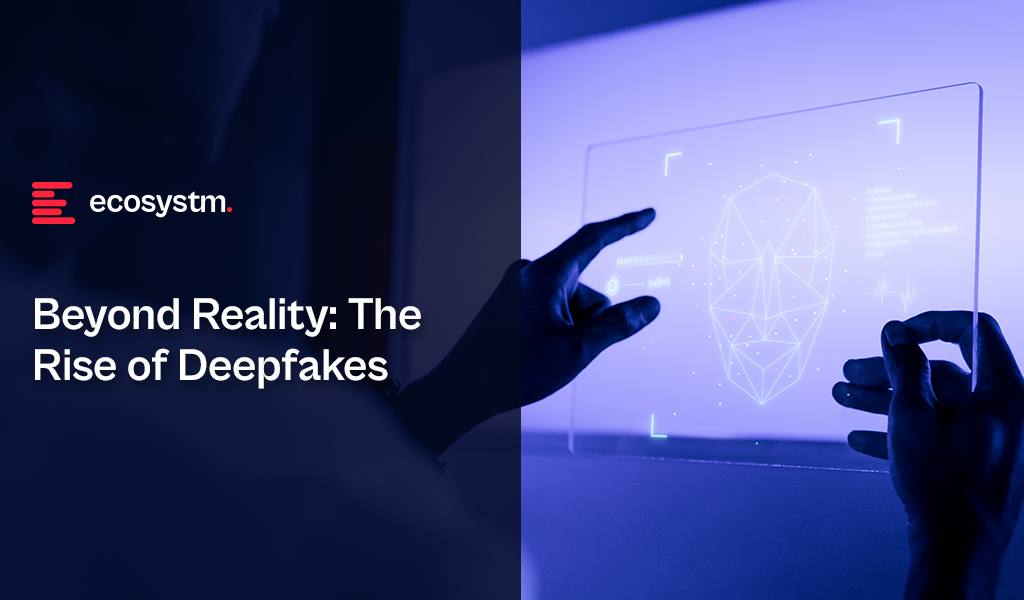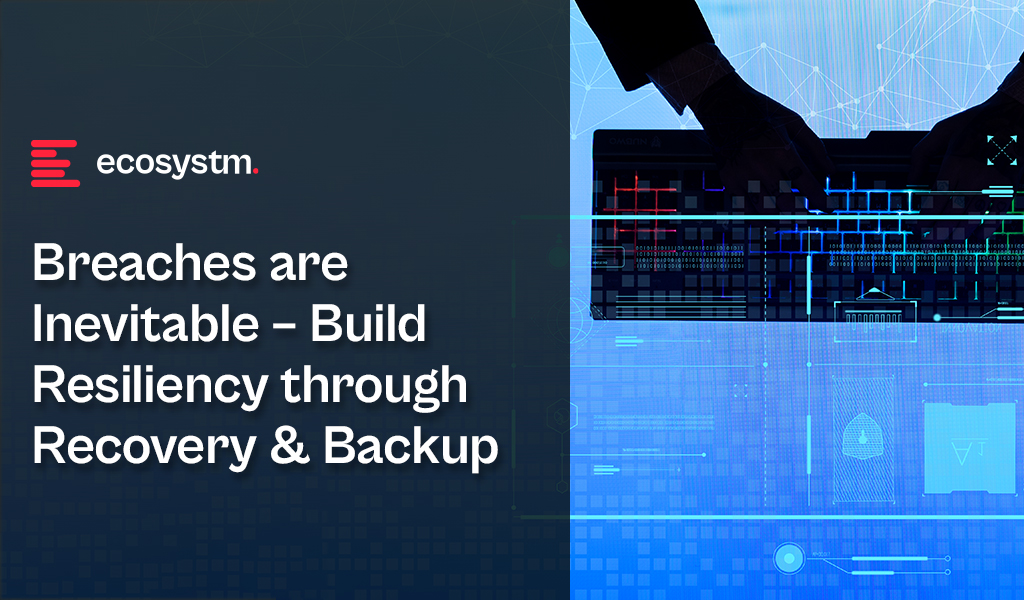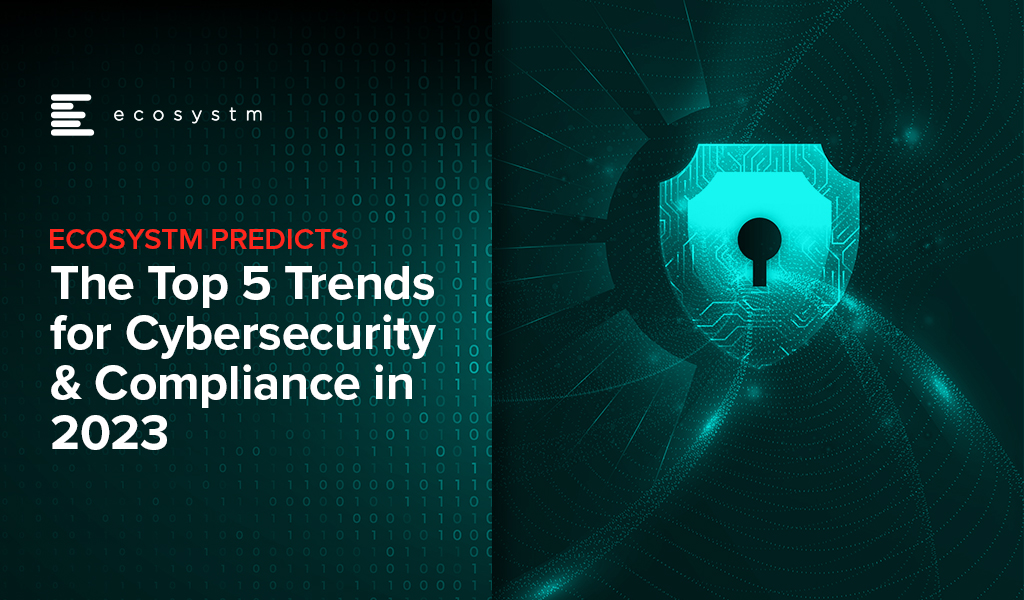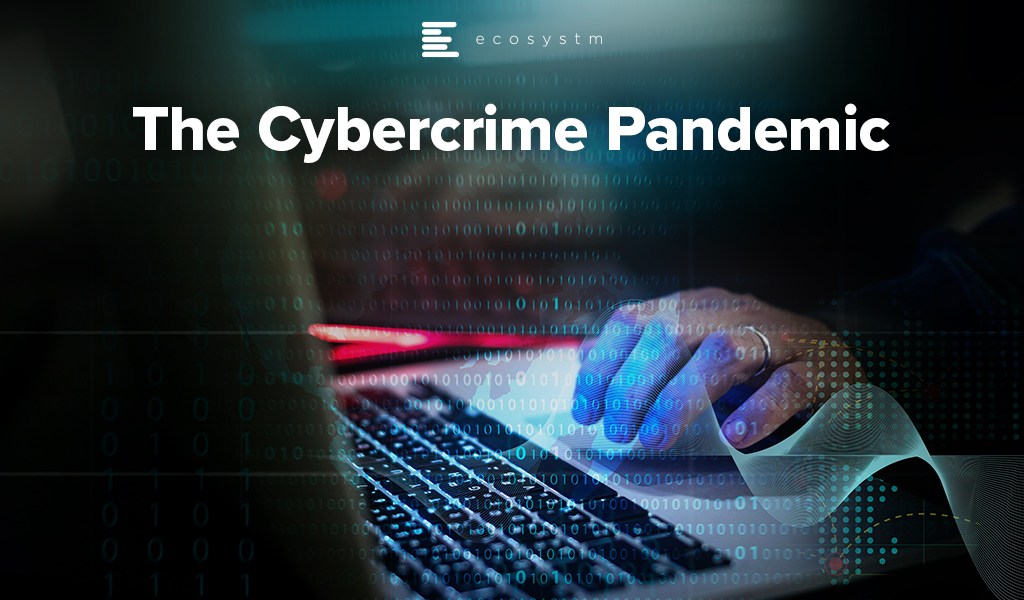In the Ecosystm Predicts: Building an Agile & Resilient Organisation: Top 5 Trends in 2024, Principal Advisor Darian Bird said, “The emergence of Generative AI combined with the maturing of deepfake technology will make it possible for malicious agents to create personalised voice and video attacks.” Darian highlighted that this democratisation of phishing, facilitated by professional-sounding prose in various languages and tones, poses a significant threat to potential victims who rely on misspellings or oddly worded appeals to detect fraud. As we see more of these attacks and social engineering attempts, it is important to improve defence mechanisms and increase awareness.
Understanding Deepfake Technology
The term Deepfake is a combination of the words ‘deep learning’ and ‘fake’. Deepfakes are AI-generated media, typically in the form of images, videos, or audio recordings. These synthetic content pieces are designed to appear genuine, often leading to the manipulation of faces and voices in a highly realistic manner. Deepfake technology has gained spotlight due to its potential for creating convincing yet fraudulent content that blurs the line of reality.
Deepfake algorithms are powered by Generative Adversarial Networks (GANs) and continuously enhance synthetic content to closely resemble real data. Through iterative training on extensive datasets, these algorithms refine features such as facial expressions and voice inflections, ensuring a seamless emulation of authentic characteristics.
Deepfakes Becoming Increasingly Convincing
Hyper-realistic deepfakes, undetectable to the human eye and ear, have become a huge threat to the financial and technology sectors. Deepfake technology has become highly convincing, blurring the line between real and fake content. One of the early examples of a successful deepfake fraud was when a UK-based energy company lost USD 243k through a deepfake audio scam in 2019, where scammers mimicked the voice of their CEO to authorise an illegal fund transfer.
Deepfakes have evolved from audio simulations to highly convincing video manipulations where faces and expressions are altered in real-time, making it hard to distinguish between real and fake content. In 2022, for instance, a deepfake video of Elon Musk was used in a crypto scam that resulted in a loss of about USD 2 million for US consumers. This year, a multinational company in Hong Kong lost over USD 25 million when an employee was tricked into sending money to fraudulent accounts after a deepfake video call by what appeared to be his colleagues.
Regulatory Responses to Deepfakes
Countries worldwide are responding to the challenges posed by deepfake technology through regulations and awareness campaigns.
- Singapore’s Online Criminal Harms Act, that will come into effect in 2024, will empower authorities to order individuals and Internet service providers to remove or block criminal content, including deepfakes used for malicious purposes.
- The UAE National Programme for Artificial Intelligence released a deepfake guide to educate the public about both harmful and beneficial applications of this technology. The guide categorises fake content into shallow and deep fakes, providing methods to detect deepfakes using AI-based tools, with a focus on promoting positive uses of advanced technologies.
- The proposed EU AI Act aims to regulate them by imposing transparency requirements on creators, mandating them to disclose when content has been artificially generated or manipulated.
- South Korea passed a law in 2020 banning the distribution of harmful deepfakes. Offenders could be sentenced to up to five years in prison or fined up to USD 43k.
- In the US, states like California and Virginia have passed laws against deepfake pornography, while federal bills like the DEEP FAKES Accountability Act aim to mandate disclosure and counter malicious use, highlighting the diverse global efforts to address the multifaceted challenges of deepfake regulation.
Detecting and Protecting Against Deepfakes
Detecting deepfake becomes increasingly challenging as technology advances. Several methods are needed – sometimes in conjunction – to be able to detect a convincing deepfake. These include visual inspection that focuses on anomalies, metadata analysis to examine clues about authenticity, forensic analysis for pattern and audio examination, and machine learning that uses algorithms trained on real and fake video datasets to classify new videos.
However, identifying deepfakes requires sophisticated technology that many organisations may not have access to. This heightens the need for robust cybersecurity measures. Deepfakes have seen an increase in convincing and successful phishing – and spear phishing – attacks and cyber leaders need to double down on cyber practices.
Defences can no longer depend on spotting these attacks. It requires a multi-pronged approach which combines cyber technologies, incidence response, and user education.
Preventing access to users. By employing anti-spoofing measures organisations can safeguard their email addresses from exploitation by fraudulent actors. Simultaneously, minimising access to readily available information, particularly on websites and social media, reduces the chance of spear-phishing attempts. This includes educating employees about the implications of sharing personal information and clear digital footprint policies. Implementing email filtering mechanisms, whether at the server or device level, helps intercept suspicious emails; and the filtering rules need to be constantly evaluated using techniques such as IP filtering and attachment analysis.
Employee awareness and reporting. There are many ways that organisations can increase awareness in employees starting from regular training sessions to attack simulations. The usefulness of these sessions is often questioned as sometimes they are merely aimed at ticking off a compliance box. Security leaders should aim to make it easier for employees to recognise these attacks by familiarising them with standard processes and implementing verification measures for important email requests. This should be strengthened by a culture of reporting without any individual blame.
Securing against malware. Malware is often distributed through these attacks, making it crucial to ensure devices are well-configured and equipped with effective endpoint defences to prevent malware installation, even if users inadvertently click on suspicious links. Specific defences may include disabling macros and limiting administrator privileges to prevent accidental malware installation. Strengthening authentication and authorisation processes is also important, with measures such as multi-factor authentication, password managers, and alternative authentication methods like biometrics or smart cards. Zero trust and least privilege policies help protect organisation data and assets.
Detection and Response. A robust security logging system is crucial, either through off-the shelf monitoring tools, managed services, or dedicated teams for monitoring. What is more important is that the monitoring capabilities are regularly updated. Additionally, having a well-defined incident response can swiftly mitigate post-incident harm post-incident. This requires clear procedures for various incident types and designated personnel for executing them, such as initiating password resets or removing malware. Organisations should ensure that users are informed about reporting procedures, considering potential communication challenges in the event of device compromise.
Conclusion
The rise of deepfakes has brought forward the need for a collaborative approach. Policymakers, technology companies, and the public must work together to address the challenges posed by deepfakes. This collaboration is crucial for making better detection technologies, establishing stronger laws, and raising awareness on media literacy.

A lot gets written about cybersecurity – and organisations spend a lot on it! Ecosystm research finds that 63% of organisations across Asia Pacific are planning to increase their cyber budget for the next year. As budgets continue to rise, the threat landscape continues to get more complex and difficult to navigate. Despite increasing spend, 69% of organisations believe a breach is inevitable. And breaches can be EXPENSIVE! Medibank, in Australia, was breached in (or around) October, 2022. The cost of the breach is expected to reach around USD 52 million when everything is done and dusted – and this does not include the impacts of any potential findings or outcomes from regulatory investigations or litigation.
Recovering Strong
While cybersecurity is still crucially important, the ability to recover from breaches quickly and cost-effectively is also imperative. How you recover from a breach will ultimately determine your organisation’s long-term viability and success. The capabilities needed to recover quickly include:
- A well-documented and practices incident response plan. The plan should outline the roles and responsibilities of all team members, communication protocols, and steps to be taken in the event of a breach.
- Backup and Disaster Recovery (DR) solutions. Regular backups of critical data and systems are essential to quickly recover from a breach. Backup solutions should include offsite or cloud-based options that are isolated from the main network. DR solutions ensure that critical systems can be quickly restored and made operational after a breach.
- Cybersecurity awareness training. Investing in regular training for all employees is crucial to ensure they are aware of the latest threats and know how to respond in the event of a breach.
- Automated response tools. Automation can help speed up the response time during a breach by automatically blocking malicious IPs, quarantining infected devices, or taking other predefined actions based on the nature of the attack.
- Threat intelligence. This can help organisations stay ahead of the latest threats and vulnerabilities and frame quicker responses if a breach occurs.
Backup and Disaster Recovery is Evolving
Most organisations already have backup and disaster recovery capabilities in place – but too often they are older systems, designed more as a “just in case” versus a “will keep us in business” capability. Backup and DR systems are evolving and improving – and with the increased likelihood of a breach, it is a good time to consider what a modern Backup and DR system can provide to your organisation. Here are some of the key trends and considerations that technology leaders should be aware of:
- Cloud-based solutions. More organisations are moving towards cloud-based backup and DR solutions. Cloud solutions offer several advantages, including scalability, cost-effectiveness, and the ability to access data and systems from anywhere. However, technology leaders need to consider data security, compliance requirements, and the reliability of the cloud service provider.
- Hybrid options. As hybrid cloud becomes the norm for most organisations, hybrid solutions backup and DR that combine on-premises and cloud-based backups are becoming more popular. This approach provides the best of both worlds – the security and control of on-premises backups with the scalability and flexibility of the cloud.
- Increased use of automation. Automation is becoming more prevalent in backup and DR solutions. Automation helps reduce the time it takes to backup data, restore systems, and test DR plans. It also minimises the risk of human error. Technology leaders should look for solutions that offer automation capabilities while also allowing for manual intervention when necessary.
- Cybersecurity integration. With the rise of cyberattacks, especially ransomware, it is crucial that backup and DR solutions are integrated with an organisation’s cybersecurity strategy. Backup data should be encrypted and isolated from the main network to prevent attackers from accessing or corrupting it. Regular testing of backup and DR plans should also include scenarios where a cyberattack, such as ransomware, is involved.
- More frequent backups. Data is becoming more critical to business operations, so there is a trend towards more frequent backups, even continuous backups, to minimise data loss in the event of a disaster. Technology leaders need to balance the need for frequent backups with the cost and complexity involved.
- Super-fast data recovery. Some data recovery platforms can recover data FAST – in as little as 6 seconds. The ability to recover data faster than the bad actors can delete it makes organisations less vulnerable and buys more time to plug the gaps that the attackers are exploiting to gain access to data and systems.
- Monitoring and analytics. Modern backup and DR solutions offer advanced monitoring and analytics capabilities. This allows organisations to track the performance of their backups, identify potential issues before they become critical, and optimise their backup and DR processes. Technology leaders should look for solutions that offer comprehensive monitoring and analytics capabilities.
- Compliance considerations. With the increasing focus on data privacy and protection, organisations need to ensure that backup and DR solutions are compliant with relevant regulations, often dictated at the industry level in each geography. Technology leaders should work with their legal and compliance teams to ensure that their backup and DR solutions meet all necessary requirements.
The sooner you evolve and modernise your backup and disaster recovery capabilities, the more breathing room your cybersecurity team has, to improve the ability to repel threats. New security architectures and postures – such as Zero Trust and SASE are emerging as better ways to build your cybersecurity capabilities – but they won’t happen overnight and require significant investment, training, and business change to implement.

In my last Ecosystm Insight, I spoke about the 5 strategies that leading CX leaders follow to stay ahead of the curve. Data is at the core of these CX strategies. But a customer data breach can have an enormous financial and reputational impact on a brand.
Here are 12 essential steps to effective governance that will help you unlock the power of customer data.
- Understand data protection laws and regulations
- Create a data governance framework
- Establish data privacy and security policies
- Implement data minimisation
- Ensure data accuracy
- Obtain explicit consent
- Mask, anonymise and pseudonymise data
- Implement strong access controls
- Train employees
- Conduct risk assessments and audits
- Develop a data breach response plan
- Monitor and review
Read on to find out more.
Download ‘A 12-Step Plan for Governance of Customer Data’ as a PDF

With organisations facing an infrastructure, application, and end-point sprawl, the attack surface continues to grow; as do the number of malicious attacks. Cyber breaches are also becoming exceedingly real for consumers, as they see breaches and leaks in brands and services they interact with regularly. 2023 will see CISOs take charge of their cyber environment – going beyond a checklist.
Here are the top 5 trends for Cybersecurity & Compliance for 2023 according to Ecosystm analysts Alan Hesketh, Alea Fairchild, Andrew Milroy, and Sash Mukherjee.
- An Escalating Cybercrime Flood Will Drive Proactive Protection
- Incident Detection and Response Will Be the Main Focus
- Organisations Will Choose Visibility Over More Cyber Tools
- Regulations Will Increase the Risk of Collecting and Storing Data
- Cyber Risk Will Include a Focus on Enterprise Operational Resilience
Read on for more details.
Download Ecosystm Predicts: The Top 5 Trends for Cybersecurity & Compliance in 2023 as a PDF

Organisations across the globe, are facing disruption on a scale never seen before, and are urgently seeking ways of remaining viable. Predictably, cybersecurity is a secondary concern and is often handled reactively. To make matters worse, a chronic cybersecurity skills shortage is being made much more severe by the crisis.
Remote working has reached unprecedented levels as organisations try hard to keep going. This is massively expanding the attack surface for cyber criminals, weakening security and leading to a cybercrime pandemic. Hacking activity and phishing, inspired by the COVID-19 crisis, are growing rapidly. Containing and suppressing this cybercrime pandemic is proving to be almost impossible.
Remote working intensifies known threats posed by phishing and ransomware. More alarming are the distinctive cybersecurity vulnerabilities associated with home working including reliance on home Wi-Fi, increased use of unpatched VPNs and devices, and the exponential growth of network access points. These vulnerabilities increase the likelihood of a breach enormously.
Corporate IT is in a very challenging position. It needs to ensure that organisations can operate in a way that they have never operated before, while ensuring that their assets are secure – a very difficult, if not an impossible task for which there is no precedent.
Some important cybersecurity considerations, during and after the COVID-19 pandemic include:
Re-enforce Basic Cyber Hygiene
As massive numbers of people work from home, basic cyber hygiene becomes more critical than ever before. Organisations must maintain awareness of security threats among employees, ensure security policies are being followed and be certain that corporate software is being updated and patched on time. With a dispersed workforce, these basic practices are more challenging, and training becomes more critical. Phishing attacks are often the primary attack vector for malicious actors, so employees must be able to identify these attacks. They increasingly exploit shortages of goods such as protective equipment and sometimes claim to offer official information relating to COVID-19.
Remote employees often access sensitive business data through home Wi-Fi networks that will not have the same security controls – such as firewalls – that are used in offices. There is more connectivity from remote locations, which requires greater focus on data privacy, and hunting for intrusions from a much larger number of entry points.
Place More Focus on Endpoint Security
The unprecedented switch to remote working is radically increasing the number of vulnerable endpoints. Given that endpoints are located at a distance from corporate premises, it is frequently difficult for IT departments to configure endpoint systems and install necessary security software.
It is vital to assess the security posture of all endpoints connecting to the corporate network. This practice enables an organisation to determine whether or not an endpoint requesting to access internal resources meets security policy requirements. It requires the ability to monitor and enforce policy across all devices, while making onboarding and offboarding seamless.
It is essential that endpoint solutions can be rapidly deployed for remote workers, as needed on both personal and corporate devices. Devices used for remote work need much more than the basic antivirus and antispyware protection. Multi-factor authentication (MFA) and on-board endpoint detection and response (EDR) capabilities are crucial.
Be More Selective About How and When Video Conferencing and Collaboration Platforms are Used
Since lockdowns spread around the world, the use of video conferencing and collaboration tools has grown beyond the wildest expectations of suppliers of these tools. The extraordinary growth of Zoom has made it a target for attackers. Many security vulnerabilities have been discovered with Zoom such as, a vulnerability to UNC path injection in the client chat feature, which allows hackers to steal Windows credentials, keeping decryption keys in the cloud which can potentially be accessed by hackers and gives the ability for trolls to ‘Zoombomb’ open and unprotected meetings. Zoom has so far managed to augment its security features in part by its recent acquisition of Keybase, a secure messaging service.
Switching to an alternative video conferencing platform will not necessarily offer greater levels of security as privacy is typically not a strength of any collaboration platform. Collaboration platforms tend to tread a fine line between a great experience and security. Too much security can cause performance and usability to be impacted negatively. Too little security, as we have seen, allows hackers to find vulnerabilities. If data privacy is critical for a meeting, then perhaps collaboration platforms should not be used, or organisations should not share critical information on them.
Protect all Cloud Workloads
In today’s remote working paradigm, cloud computing is being used more than ever. This frequently exposes organisations to risks that are not adequately mitigated.
Organisations typically need to manage a mix of on-premises technology together with multiple clouds, which are often poorly integrated. These complexities are compounded by the increasing risk from cyberattacks associated with cloud migration and hybrid cloud implementations. In cloud environments, the leading cybersecurity risks include insecure interfaces and APIs, data breaches and data loss, unauthorised access, DDoS attacks, and a lack of a unified view of assets.
Protection requirements for securing hybrid multicloud environments are evolving rapidly. In addition to tightening up endpoint security, organisations must also place greater emphasis on cloud workload protection. Cloud security solutions need to offer a unified and consistent view across all physical machines, virtual machines, serverless workloads and containers, used by an organisation.
Amend Incident Response Plans
It is the containment of breaches that often determines the success of security policies and procedures. Basic cyber hygiene as well as changes to IT architecture, such as micro segmentation, play an essential role in breach containment. But incident response plans also need to be made relevant to the current pandemic scenario.
Employees and IT teams are now working in a completely different environment than envisaged by most incident response plans. Existing plans may now be obsolete. At the very least, they will need to be modified. Usually, incident response plans are designed to respond to threats when most employees are operating in a corporate environment. This clearly needs to change. Employees need to be trained in the updated plan and know how to reach support if they believe that a security breach has occurred in their remote location.
Critically, new alert and warning systems need to be established, which can be used by employees to warn of threats as well as to receive information on threats and best practices.
Organisations are struggling to keep the lights on. In this battle to remain operational, cybersecurity has been taking a back seat. This cannot last for long as the deluge of new vulnerabilities is creating easy pickings for attackers. Cyber hygiene, endpoint security, cloud security, security policies and incident response plans must be continually reviewed.
Click here to download the full report ?

























